Review: First look – Magic Factory F4U-1A / F4U-2 Corsair
Photos to come later. This is first impressions:
Most important: don't believe the voices over at Hyperscale. The kit is not unbuildably wrong - not as much as the usual critics are unreformable.
The rivet pattern in the wings they are all in an uproar over there are not "all over the place." They aren't exactly accurate (not enough lines of rivets), but they are nice and straight and if you want to correct that, five minutes with a pounce wheel will take care of it. Where the rivets are wrong is on the horizontal stabilizers. I've been around Corsairs for 50+ years and there weren't any: the horizontal stabs were sheet aluminum wrapped around a balsa core. For those with the hand-eye coordination to touch your nose three times in succession with your forefinger, five minutes tops with some Mr. Surfacer and another five minutes with sanding sticks will solve that. The rives are light enough you might not need the Mr. Surfacer.
As to the complaint about the fabric detail in the outer wings, this is no different from that you find on every other Corsair model.
Now that the conspiracy theories and misinformation have been dealt with,...
What's there:
There is more detail in these kits than in the Tamiya kits. This includes the cockpits, the wheel wells, the wing gun bays and the engine. All control surfaces are separate.This is unsurprising given the progress in plastic molding in the 28 years since the Tamiya kits first came out.
They made the same mistake (only a little bigger) than Tamiya did with the cutout foot step in the inner starboard flap, which is easily dealt with using some Evergreen sheet and "some modeling skill required."
There are two sets of wings for each kit - folded and unfolded. Each has a carry-through spar that insures everything will be at the correct angles when assembled. Those spars are strong enough you will likely be able to pick up a folded-wing model by the wingtip safely.
Decals are provided for the following:
F4U-1A - Ike Kepford's second "29" (which should have a Hellcat prop if you're paying attention) and "049" from Kwajalein.
F4U-2: one of the four F4U-2s in the VF(N)-101 detachment on Enterprise and the VMF(N)-542 airplane that shot down a Betty over Tinian.
The decals are by Cartograf and look fine.
Overall:
The kit is not a "game changer" the way the Eduard P-51D and Wildcat are over their Tamiya equivalents. It is a more detailed kit than the Tamiya Corsairs. It will make up into a competent model and need additional work as your personal standards dictate.
It is not what is being portrayed "over there."
(Ed.) Check Tom's build thread on this kit:
https://imodeler.com/groups/work-in-progress-aircraft/forum/topic/magic-factory-1-48-f4u-1-corsair/
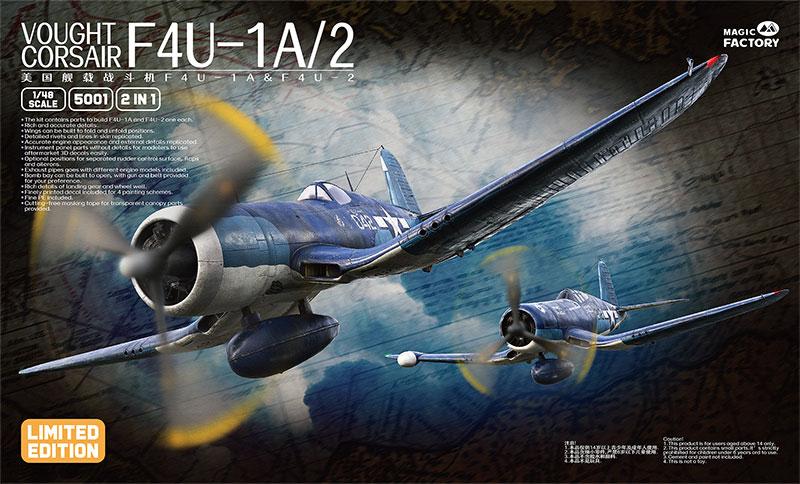
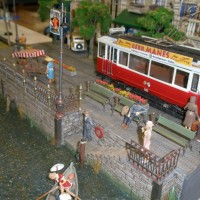
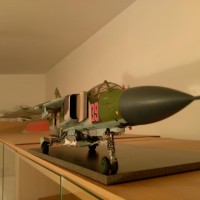
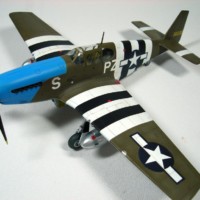
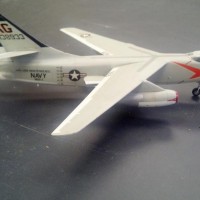
I saw what was being said over at the other site, and while as usual with ANY kit, there are detractors who seem to always look for the negative, there were some reasonable voices also. I for one am anxious to see more pictures of the sprues.
I like rivet detail but am not 100% concerned about how accurate it is (see my B-24 build to know that). Most model companies get the fabric wrong one way or the other. If you look at the real fabric surfaces the rib tape is usually hardly noticable at all especially at scale. Because of all the layers of silver dope over the fabric it also is acutally fairly smooth, you can see the rib tape in the picture of the Grumman Goose I worked on.
I look foward to your pictures Tom, @tcinla, so I can see the plastic. At the price point, two wings, wing spars, more detail then the Tamiya kit, I think it sounds like a good deal to me.
1 attached image. Click to enlarge.
Thanks for the review, Tom.
Thanks very much Tom.
Who wouldn't like 4 sets of wings!
I am still amazed that people who are complaining about this kit seem to ignore the plethora of problems, inaccuracies and pure fiction with the Hobby Boss F4U-4 Kits!
Dan from Bermuda.
Exactly right.
Thanks a lot for the review, Tom @tcinla
Sounds like I might have to buy another Corsair kit. Thanks for a straight forward, no "dramatics" review. Coming from someone who's actually spent a lot of time around the real aircraft gives your review that much more weight.
I was reading and shaking my head at the comments on HS. @tcinla I'll keep my Tamiya's! Thanks for the review Tom, much appreciated.
It's not the perfect kit, but it is a generation ahead of the previous standard.
I'll keep that in mind if I want another Corsair.
It looks like a nice kit with a load of detail. But I do have a lot of built Corsairs and see no reason to replace them with this. It’s nice to have options, choice is good.
Good stuff Tom. While the bashing goes on "over there ➽ " it won't stop me from getting the kit...the price might though, even it does contain two kits. I've built both the Tamiya and Hobby Boss kits and both require work more-so on the Hobby Boss
The Rivet Counters and the Town Criers who find the fatal flaws . . . say's more about the Crier than the kit. All kits have trade offs and if the kit is competent and in league with legacy Tamiya kit then the sky is not falling down. The Magic Factory is a new manufacture if they can do a good improvement on a standard then all the more power to them.
Tom Cleaver (@tcinla)
You just might have added insult with injury to my wallet... again... with this wonderful review. Now I can see myself getting one of these. They look like a very nice set of Corsair kits. I sincerely appreciate the time you took to post this up.
However there is one minor thing you might want to consider changing, the comment about the Corsair horizontal stabilizers being a balsa core wrapped with sheet aluminum. That's not true.
It is true that Vought did invent or pioneer the aluminum sandwich skinning on aircraft. They used it for the very first time on the F6U Pirate. It was a composite material called "Metalite". The outer layers were sheet aluminum, with a balsa core.
The actual Corsair horizontals were the typical aluminum construction with aluminum skin. They were interchangeable between sides, so there was not a designated Right or Left.
The elevators were also interchangeable. They too were of aluminum construction, but they were fabric covered as you know.
The ailerons however were built primarily of wood. I discovered this when I got a good close up look at the Collings Foundation F4U-5NL during its restoration(s)... Both of them. Shortly after the first one, the plane had to be ditched a few miles offshore in the Atlantic. It's incredible how much damage salt water can do to magnesium parts in such a short time.
The wheels, rocket stubs, and most of the engine were unrecognizable after being under water for less than a week. My hat's off to the pilot. as he did a wonderful job ditching the plane. Which made it a lot easier the second time around... but still everything had to be restored again because of corrosion concerns.
This is an excellent review.
Had I not spent the majority of my adult life studying the Corsair I would not have known this. Consider me as a Corsair aviation geek.
G'day Tom & Louis, I've been reading these comments on the new Corsair kit with great interest. I'm ex-RAAF and for over 20 years I've been working as a military historian specialising, you guessed it, in aircraft of WW2, Korea and into Vietnam. However much of my 'retirement job' also involves general history topics of those three main conflicts
The DeHavilland Mosquito and the Voight Corsair are my two all-time favourite heavy fighter/light bomber aircraft. It's their designs, brought about by unusual requirements, that have fascinated me for decades.
In the case of the Mosquito the UK Dept of Supply and the RAF didn't 'know' that they needed this outstanding invention; probably making it the most significant 'built on spec.' aircraft of its, or any other, era.
The Voight Corsair is a symphony of form complimenting function. It's the reverse 'gull wing' that seals it for me. I never tire of looking at them, or building models of them. Now, mostly, I give away my Corsairs to those mates I know will appreciate them. I figure a couple of 'squadrons' in larger scales is enough for any model aircraft 'tragic'. My former 'brothers' in the RNZAF flew Corsairs and I still haven't found out why the RAAF passed on them.
Because I approached my return to modelling as a military historian, I'm a bit of a stickler for historical accuracy, however, I always bear in mind that I'm making models of any aircraft I put together. I'm not a 'rivet counter' unless I was building for a museum commission but I'll not face this dilemma as my skill set is nowhere near that level of expertise.
From the earliest days of big production runs of commercial models we have all been tied to the limitations and advancements in the moulding process.
With the possible exception of companies like Wingnut Wings; their successors at Kotare and maybe two more companies, like Eduard or Tamiya; it's safe to say that no one fabricates plastic moulded kits that build into precise replicas of the real aircraft.
I select aircraft to build based on interesting stories involving the creation of the aircraft and/or the exploits of notable pilots or aircrew that left their mark from among the untold thousands of fliers who put their lives on the line each time they strapped on a parachute, if they had one.
I was unable to train as a pilot in my Service so I resolved to pay tributes to fliers, well known, or not, and remember the clever people who designed, worked on and maintained iconic military aircraft. At the end of the day, I don't really think the position of every rivet, every access port or the type of every radio or radar set is as vital as many people might consider.
Apart from our own enjoyment, relaxation and, to a point, education, every time we finish a model we are, in some tiny way, saluting those generations of fliers and the people who put them, and kept them, in the air. The finest, most intense, attention to 'near microscopic' detail of my models does not concern me.
I've been incredibly lucky in that I once had a job that took me to many countries around the globe. Where possible, I'd always seek out Allied War Graves Cemeteries.
In just about every location, no matter what country the majority of those interred might have been from, I'd always find, at least, a small section of graves belonging to Australians and/or New Zealanders who never grew old enough to be called 'veterans' in the usual sense.
It's these young men I think of, sometimes, while I'm modelling. For me, that's what the hobby's all about. As we say every April 25th on ANZAC Day, "Lest We Forget".
Cheers, and all the best to my brother and sister modellers. Bill H.